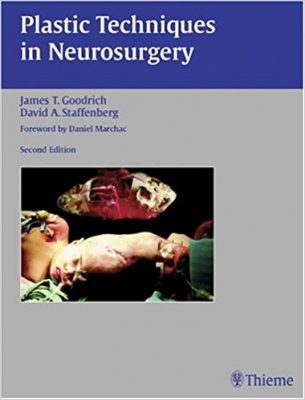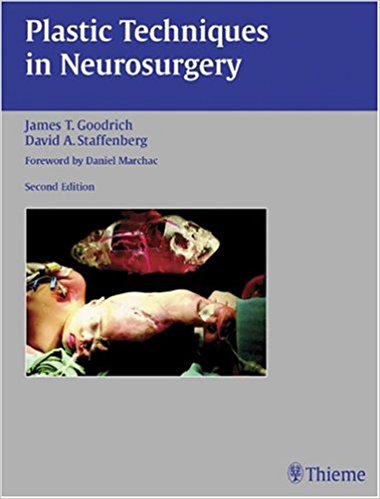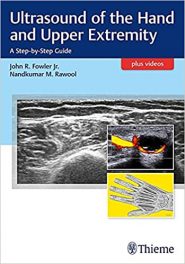 Editors: James Tait Goodrich, MD; and David A. Staffenberg, MD
Editors: James Tait Goodrich, MD; and David A. Staffenberg, MD
Publisher: Thieme – 136 pages
Book Review by: Nano Khilnani
The editors describe one feature of this book as being ‘a palimpsestic atlas,’ meaning that it shows diseases and disorders with diverse layers and aspects beneath the surface. This term is not restricted to medicine. In archeology, an example of a palimpsest is a parchment or tablet used one or more times after earlier writing has been erased.
One other feature of this unusually useful book is that it takes a multidisciplinary approach to the surgical treatment of physical conditions that would be quite difficult for a single specialist to successfully complete. You will note in the paragraph below that even as there are only eight coauthors of the chapters of this book, they are in at least nine surgical specialties.
As in most fields within medicine and surgery, the outcomes have improved over the decades. This is because the body of knowledge has greatly enlarged, technology has produced new diagnostic equipment and surgical instruments, the experience of physicians and surgeons has broadened, their skills have become more numerous and sharper, and as a consequence of all this, they have gained much insight that leads to better surgical outcomes for patients.
Eight specialists including the two editors named above – in clinical, craniofacial, oral, otolaryngological, maxillofacial, neurological, pediatric, plastic, and reconstructive surgery – from California, New York, and Washington DC, authored the six chapters of this one-of-a-kind book. We provide you an overview of the contents by listing its chapters below:
- Plastic Surgery Wound Coverage for the Neurosurgery Patient
- Repair of Calvarial Bone Defects: Cranioplasty and Bone-Harvesting Techniques
- Congenital Malformations of the Brain and Spine: Repair Technologies
- Cranofacial Reconstruction for Craniosynostosis
- Congenital Facial Disorders
- Craniofacial and Transfacial Approaches to the Midface and Skull Base Region
Let’s take a look at what is shown and discussed in chapter 4, Cranofacial Reconstruction for Craniosynostosis on pages 56-93, authored by Dr. James Tait Goodrich.
Craniosynostosis is a condition in which one or more of the fibrous sutures in an infant’s skull prematurely fuses by turning into bone (termed ossification), thereby changing the growth pattern of the skull.
Because the skull cannot expand perpendicular to the fused suture, it compensates by growing more in the direction parallel to the closed sutures (as shown on figures 4-4, A,B,C, and 4-5, A,B,C on pages 58 and 59). This results in a deformed head that also stunts the child’s physical, mental, and psychological development, causing a variety of problems.
Sometimes the resulting growth pattern provides the necessary space for the growing brain, but results in an abnormal head shape and abnormal facial features.
In cases in which the compensation does not effectively provide enough space for the growing brain, craniosynostosis results in increased intracranial pressure leading possibly to visual impairment, sleeping impairment, eating difficulties, or an impairment of mental development combined with a significant reduction in intelligence quotient.
Figure 4-4 (A) shows (quoting the caption): an infant with right-side coronal synostosis with flattening and restriction of growth in the right frontal region. The left forehead has pushed forward in a compensatory fashion, leading to a further development of orbital dystopia and facial scoliosis.
Dr. Goodrich illustrates with captioned photos of patients and sketches of their cranial deformities, the surgical procedures necessary for reconstruction of the following types of synostoses, along with operative positing, timing of surgery, and other sets of instructions:
- Plagiocephaly (Unilateral Coronal Synstosis)
- Scaphocephaly (Sagittal Synostosis)
- Trigonocephaly (Metopic Synostosis)
- Posterior Plagiocephaly (Lambdoid Synostosis, Posterior Positional Deformation)
- Pansynostosis (Multiple Suture Synostosis) Kleebattschadel
At the end of the chapter, he provides important notes and a list of information sources:
- Some Thoughts on Anesthetic Techniques and Other Potential Problems in Cranofacial Surgery
- References
This is a unique, valuable book in that it is the combined effort of specialist surgeons who have put together their various resources – knowledge, experience, skills, and insight – in providing surgical treatments that make it easier to treat complex and difficult neurosurgical conditions.
In that respect, this book represents a pioneering work in medicine and surgery.
Editors:
James Tait Goodrich, MD, PhD, FRCM is Professor of Neurosurgery, Pediatric, Plastic, and Reconstructive Surgery; and Director of the Division of Pediatric Neurosurgery at the Albert Einstein College of Medicine at Montefiore Medical Center in the Bronx, New York.
David Staffenberg, MD, FACS is Assistant Professor of Plastic and Reconstructive Surgery and Pediatrics in the Department of Plastic and Reconstructive Surgery at the Albert Einstein College of Medicine at Montefiore Medical Center in the Bronx, New York.
Contributors:
Sidney Eisig, DDS
Joseph G. Feghali, MD, FACS
James Tait Goodrich, MD, PhD, FRCM
Henry K. Kawamoto, Jr., MD, DDS
Robert F. Keating, MD
David A. Staffenberg, MD
Berish Strauch, MD
Mark Urata, MD, DDS







